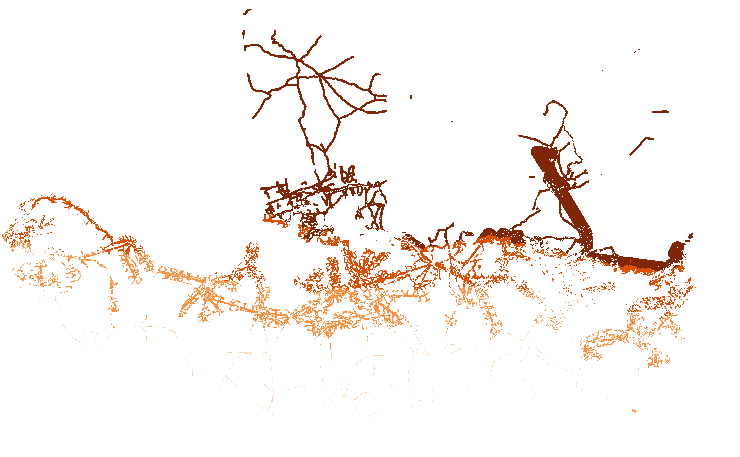asNeeded
Keywords
Regions
Contact for the resource
Provided by
Years
Formats
Representation types
Update frequencies
status
Scale
Resolution
-
Precipitation data Lare/Burkina Faso Measured parameters: Precipitation Timestep: hourly
-
Location of education facilities that could have access to electricity through off-grid solutions by 2030 according to the least-cost analysis conducted in the framework of the off-grid solar market assessment and private sector support facility design, which was done as an activity of the sub-component 1A of the Regional Off-Grid Electrification Project (ROGEP).
-

This dataset was generated using GIS methods to estimate technical potential for solar electricity generation in rural areas of ECOWAS region. Technical potential of solar generation in a chosen area may be defined as the amount of the total yearly solar radiation available in that area, taking into account existing geographical constraints, ("suitability maps") that can be converted into electricity given the available solar power technologies. Technical potentials in GWh per year per cell at 1km resolution have been calculated by multiplying DNI (or GHI) for the technical parameters (performance, efficiency) related to CSP or PV, and for the available area. The available area was estimated using for: - CSP (grid connected) only cells with land suitability score > 302 (5% of total cells) - PV (grid connected) only cells with land suitability score > 299 (5% of total cells) - PV (off grid) only cells with land suitability score > 255 (5% of total cells)
-
The layer provides quantitative information about the inhabitants main points in the different countries for the ECOWAS region
-

Climate data Wahable/Burkina Faso Measured parameters: Air temperature Relative humidity Solar radiation Precipitation Windspeed Winddirection Timestep: hourly
-
Climate data Koundri/Benin Measured parameters: Air temperature Relative humidity Solar radiation Precipitation Windspeed Winddirection Timestep: 10 Minutes
-

Thesis - Abstract Supervisors: - Prof. B. Diekkrueger Contribution to the Core Research Program Work-Package: RC 2 - Landscape Dynamics WP 2.3 - Water Scarcity
-

Table with maize biomass and yield (primary/raw) from central field experiment plots in the Vea, Dano and Dassari catchments (main research sites in the WASCAL Core Research Program), Ghana, Burkina Faso and Benin, 2014
-

Climate data Fafo/Burkina Faso Measured parameters: Air temperature Relative humidity Solar radiation Precipitation Windspeed Winddirection Timestep: hourly
-

This dataset is the sixth of a series of datasets addressing farmers' adaptation to climate change in West-Africa, specifically in Dassari, Benin. This data was obtained by interviews with smallholder farmers from various communities in the Dassari basin. It provides information on the household level on farming history, fertilizer use, crop rotation practices and the farmers' motivation behind changing their practice. Soil sample data provides information on N,P,K, C content with the intention of evaluating residual effect of fertilizer in soil. Data includes questionaire and results, and soil sample data all corresponding to multi-year study of fields. The coordinates of the soil sample plots can be obtained upon request to the author due to data privacy protection demands.
 PAUWES Data Portal
PAUWES Data Portal